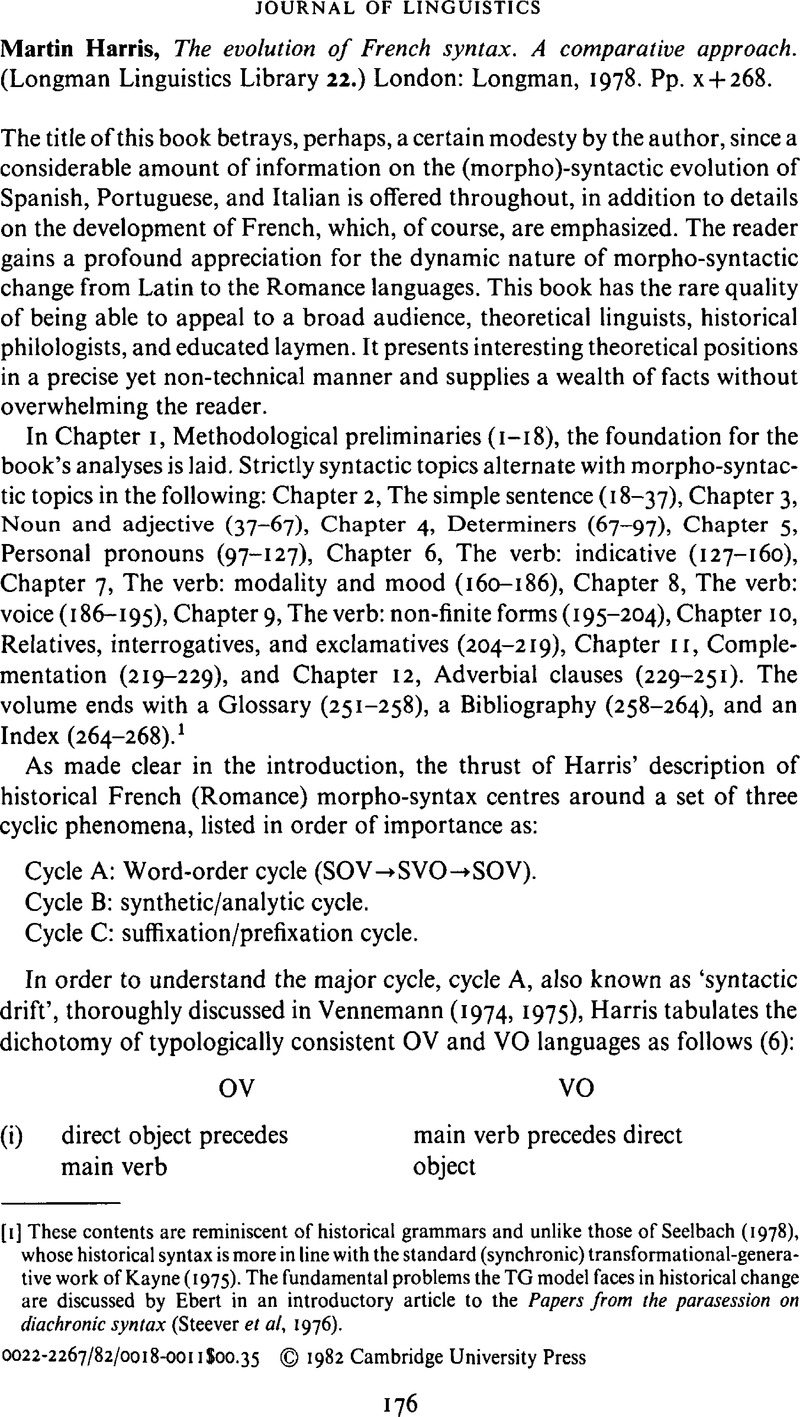No CrossRef data available.
Article contents
Journal of Linguistics - Martin Harris, The evolution of French syntax. A comparative approach. (Longman Linguistics Library 22.) London: Longman, 1978. Pp. x + 268.
Published online by Cambridge University Press: 28 November 2008
Abstract
An abstract is not available for this content so a preview has been provided. Please use the Get access link above for information on how to access this content.

- Type
- Reviews
- Information
- Copyright
- Copyright © Cambridge University Press 1982
References
REFERENCES
Anderson, E. (1979). The development of the Romance future tense: Morphologization II and a tendency toward analyticity. Papers in Romance I (1). 21–35.Google Scholar
Ashby, W. (1977). Clitic inflection in French. An historical perspective. Amsterdam: Rodopi.CrossRefGoogle Scholar
Bull, W.E. (1960). Time, tense, and the verb: a study in theoretical and applied linguistics with particular attention to Spanish. Berkeley: University of California Press.Google Scholar
Cannings, P. (1978). Interlocking binding and relativisation strategies. Studies in French linguistics I (1). 1–40.Google Scholar
Kayne, R. (1975). French syntax. The transformational cycle. Cambridge, Mass.: M.I.T. Press.Google Scholar
Klein, W. (1975). Eine Theorie der Wortstellungsveränderungen. Einige kritische Bemerkungen zu Vennemanns Theorie der Sprachentwicklung. LBer 37. 46–57.Google Scholar
Pulgram, E. (1967). Trends and predictions. In To honor Roman Jakobson, 1634–49. The Hague: Mouton.Google Scholar
Pulgram, E. (1977). Indo-European passive paradigms: defects and repairs. Forum linguisticum 2 (2). 95–106.Google Scholar
Seelbach, D. (1978). Transformationsregeln im Französischen aus der Sicht der historischen und romanischen Syntax. Heidelberg: Carl Winter.Google Scholar
Steever, S., Walker, C. & Mufwene, S. eds. (1976). Papers from the parasession on diachronic syntax. Chicago: CLS.Google Scholar
Vennemann, T. (1974). Topics, subjects, and word order: from SXV to SVX via TVX. In Anderson, J. & Jones, C. (eds.) Historical linguistics. Amsterdam: North-Holland. 339–376.Google Scholar
Vennemann, T. (1975). An explanation of drift. In Li, C. (ed), Word order and word order change. Austin: University of Texas Press. 269–305.Google Scholar


